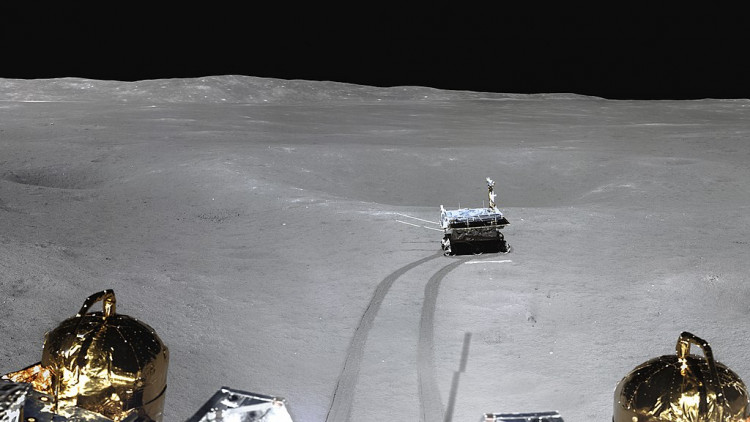China's Yutu 2 rover, the first to visit the moon's far side, discovered significant variations between there and the near side. On the other side, there is stickier, more supportive soil, as well as a larger abundance of small rocks and impact craters.
Yutu 2 landed on the moon as part of the Chang'e 4 mission in January 2019, becoming the first vehicle to land on the moon's far side. The mission's objectives are to investigate the composition of the basalt rocks on the moon's far side and to compare those volcanic rocks to the rocks on the moon's near side.
The rover has gone 3,300 feet since its arrival, examining the geology of our nearest cosmic neighbor along the way.
On the far side of the moon, according to a report published in Science Robotics, the soil looks to be slightly stickier than on the near side. Clods of lunar dirt were sticking to Yutu 2's wheels, indicating that the far side's surface is more consolidated and loamy than the near side's, researchers observed.
Yutu 2 also discovered quite a lot of tiny craters. The researchers documented 88 craters in the paper, 57 of which were less than 32.8 feet across. Only two were wider than 196 feet. Based on their location and size, several of the smaller craters are likely to be secondary craters of the larger Zhinyu crater, near where the rover landed, rather than separate impacts.
The far side of the moon has more craters than the near side, but not because of greater impacts. Rather, the near side has experienced higher volcanic activity.
At the bottom of one crater, Yutu 2 discovered a dark greenish, glistening material that looked similar to the glassy materials observed in Apollo mission samples. This is the first time that one of these minerals has been detected in-situ on the moon, most likely as a result of a previous collision.
Understanding the composition of the soil and rock distribution on the lunar surface can reveal a lot about the history of the lunar surface as well as how future lunar rovers will be designed.
Because it blocks off Earth's transmissions, the lunar far side is also relatively electromagnetically quiet, making it ideal for astronomy. Any observatory built there will necessitate a thorough understanding of the lunar far side's soil composition and surface, which could be researched in future expeditions.





